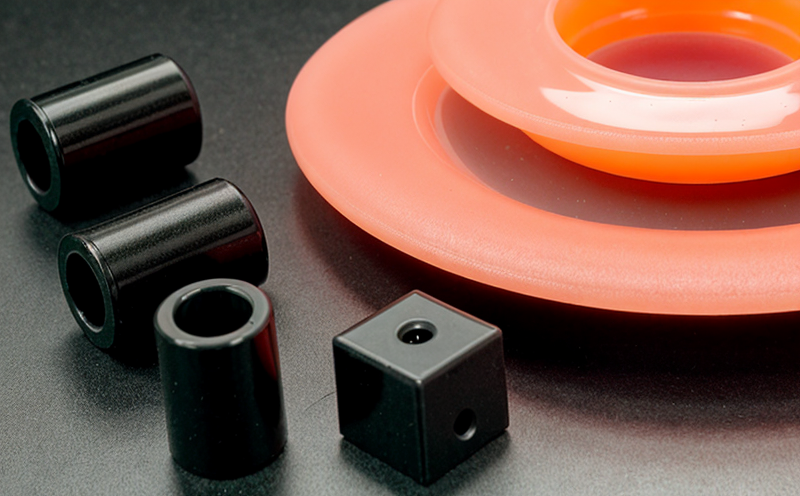ISO 4589 Oxygen Index Flammability Testing of Plastic Leisure Products
The ISO 4589 flammability test is a critical procedure used in the evaluation and certification of plastic materials for their fire-retardant properties, particularly important in sectors like sports and leisure. This standard measures how much oxygen a material can consume before it ignites and burns steadily under controlled conditions.
The test involves burning a small sample between two metal plates with an oxygen/nitrogen mixture. The oxygen concentration is gradually reduced until the flame goes out, marking the point at which the material no longer supports combustion. This value—the Oxygen Index (OI)—indicates the minimum percentage of oxygen required to sustain combustion.
The process ensures that plastic products used in sports and leisure equipment meet regulatory safety standards, preventing potential hazards associated with flammable materials. The test is particularly crucial for items like inflatable toys, personal flotation devices, and other products where fire resistance is paramount.
For quality managers, compliance officers, and R&D engineers working on these projects, understanding the nuances of ISO 4589 testing can significantly enhance product safety and marketability. The test not only ensures compliance with international standards but also provides valuable data for improving material selection and design.
The apparatus used in this test includes a specialized combustion chamber equipped with gas flow meters and sensors to monitor oxygen concentration accurately. Samples are typically small rectangles cut from the intended product, ensuring that results reflect real-world performance under controlled conditions.
Understanding the implications of Oxygen Index testing is essential for procurement teams as well. By specifying this test in material specifications, they can ensure suppliers deliver products meeting stringent safety criteria. This not only protects end-users but also helps maintain a company's reputation for quality and reliability.
Scope and Methodology
| Parameter | Description |
|---|---|
| Test Sample Preparation | Rectangular samples are cut from the product, ensuring they are 150 mm long and 25 mm wide. |
| Combustion Chamber Specifications | The chamber is maintained at a temperature of 23°C ± 2°C with humidity controlled to 50% ± 10%. The apparatus is equipped with a gas supply system for oxygen and nitrogen. |
| Gas Flow Rate | The flow rate must be precisely controlled, typically set at 40 mL/min ± 2 mL/min. Oxygen concentration is gradually reduced from 21% to the point where combustion stops. |
| Flame Propagation | If a flame propagates for more than 5 seconds, the test is repeated with a higher oxygen level. The process continues until the lowest concentration at which the sample does not support combustion is determined. |
| Acceptance Criteria | The Oxygen Index must meet specific requirements set by relevant standards or industry guidelines. For example, personal flotation devices may require an OI value above 25% to ensure safe operation in water environments. |
Industry Applications
The ISO 4589 oxygen index test is widely used across various sectors within sports and leisure products. Manufacturers of inflatable rafts, personal flotation devices (PFDs), diving gear, and other water-related equipment rely on this testing to ensure their products meet strict safety standards.
For instance, in the production of life jackets, manufacturers use ISO 4589 to verify that the foam inserts used are flame-retardant. This ensures that if a person falls into cold water while wearing such gear, there is minimal risk of fire-related hazards.
The test is also crucial for producing safety equipment in sports like mountain biking or rock climbing. Helmets and body protectors must withstand accidental friction against abrasive surfaces without igniting under extreme conditions. By adhering to ISO 4589 standards, manufacturers can ensure their products are safe even in the most demanding environments.
Additionally, this testing is beneficial for producing recreational items such as camping gear or outdoor furniture made from plastic materials. Ensuring these items do not become a fire hazard when exposed to natural elements like sunlight and moisture adds significant value to consumer safety.
The data derived from ISO 4589 tests helps manufacturers optimize product design, choosing materials that balance performance with safety. This approach enhances the overall quality of products, contributing to safer and more reliable sports and leisure equipment.
Environmental and Sustainability Contributions
The ISO 4589 oxygen index test plays a crucial role in promoting environmental sustainability within the plastics industry. By ensuring that plastic materials used in sports and leisure products are flame-retardant, manufacturers can reduce the risk of accidental fires.
Avoiding fires not only protects users from potential injuries but also minimizes the impact on natural environments. For example, preventing wildfires in recreational areas where camping equipment is often used helps preserve ecosystems and biodiversity.
Moreover, using flame-retardant materials can extend the lifespan of products, reducing waste generation and promoting recycling efforts. This aligns with broader sustainability goals by encouraging responsible consumption and production practices.
The test also supports the development of eco-friendly alternatives to conventional plastics. By identifying which materials are most effective in resisting ignition without compromising performance, manufacturers can innovate more sustainable solutions for various applications.
Overall, ISO 4589 oxygen index testing contributes significantly to environmental protection by enhancing product safety and promoting responsible use of resources. This aligns with global initiatives aimed at reducing the carbon footprint and fostering a circular economy.





